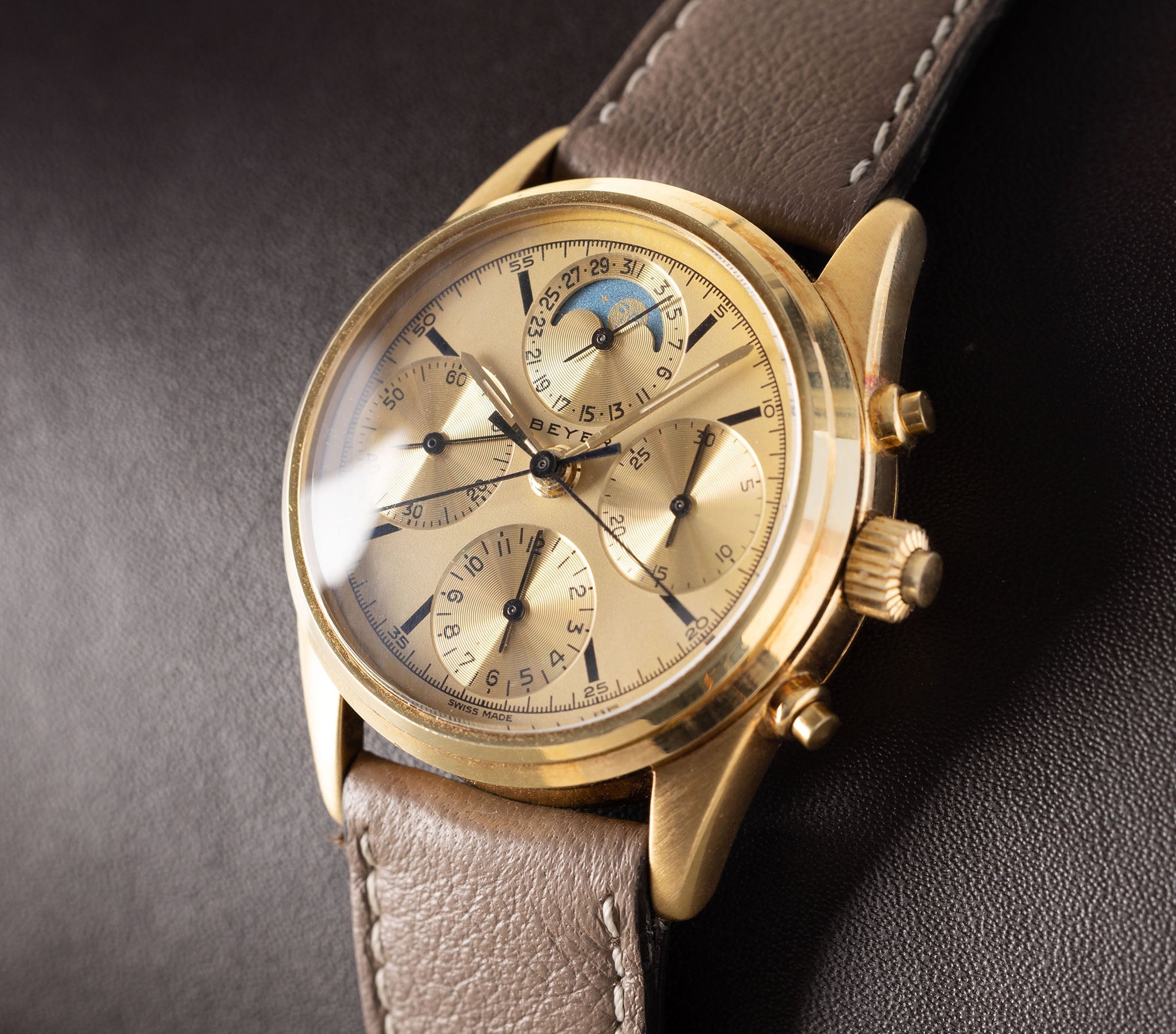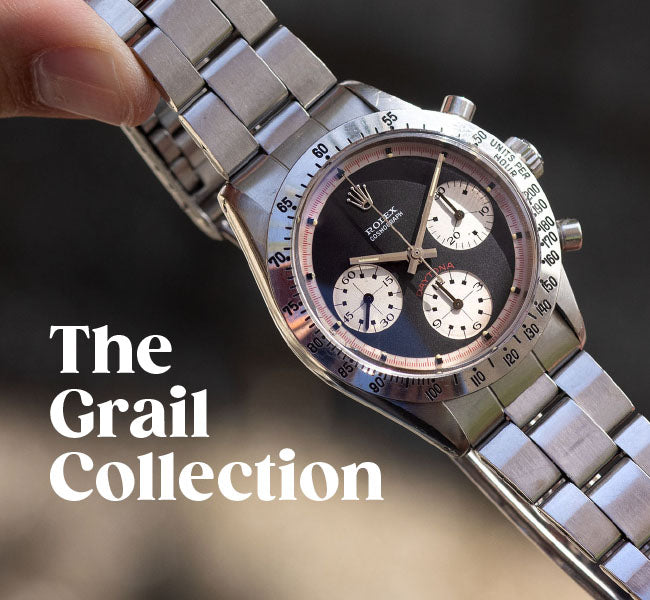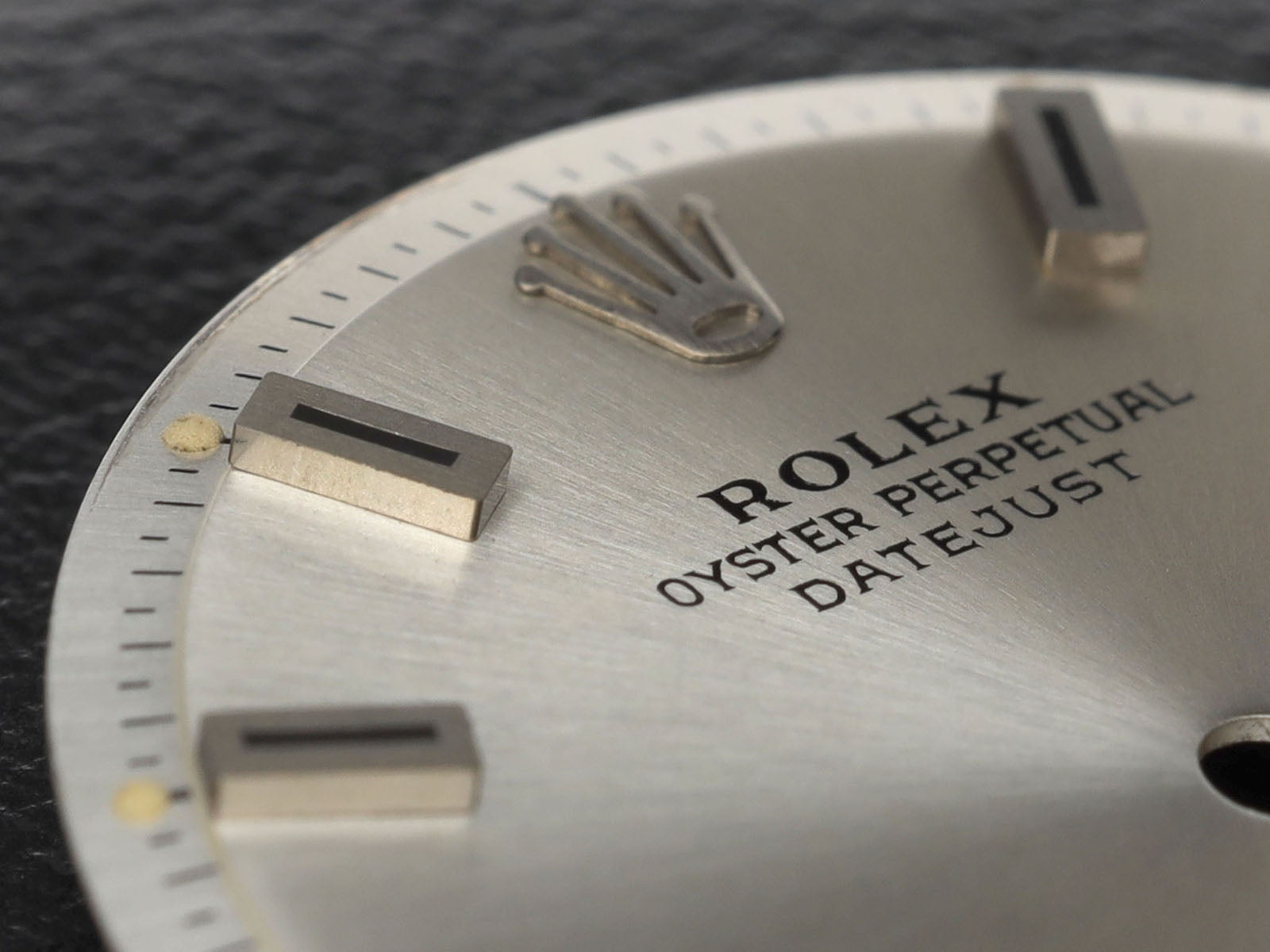
Splitting The Moon – The Beyer Moonphase Rattrapante
We are always so proud to be able to find some real rare and special watches, available for you. And we love to share the insights and background of such master pieces.
Today we take a look at a very interesting and rare yellow gold wristwatch that was commissioned by the then-head of the Beyer family, as a piece for his private collection and to, most likely, give as gifts to friends. Never publicly available, these moonphase split seconds chronographs are thought to exist in just a few examples, with only three known in the current market.

The name Beyer on a watch dial is most often associated with double-signed watches by prestigious brands such as Rolex and Patek Philippe. In fact, Beyer is the oldest continuously trading watch dealer in existence, having been run by the Beyer family for over a quarter of a millennium! The family has been offering fine watches to the people of Zurich for over 260 years with the eight generation now currently heading the business up since 1996. So important and established is Beyer, that it even has its own (highly regarded) horological museum.

Currently René Beyer runs the company, but the fact that the business still exists is largely down to his father Theodor who steered the Beyer ship through the quartz crisis and also stipulated that the watches in his private collection (not the Beyer museum pieces) should be sold to ensure other collectors got to enjoy them. And so in 2003 René Beyer put the watches into auction and raised over 5 million Swiss Francs which allowed the museum to carry on! It was at this Antiquorum sale in 2003 that this incredible Beyer was first seen publicly and what a beauty it is!

All watches are beautiful, or at least they are to somebody. The phrase beauty is in the eye of the beholder is particularly apt for watch collectors. We have friends who will fall in love with a watch that looks like it’s been dragged along a beach behind a Defender for a decade (in fact, some probably were) and equally guys who collect factory-fresh new-old-stock watches. That’s precisely why collecting and loving watches is so much fun…there’s no right or wrong way to do it and there is literally something for everyone. Not all watches are, however, equal in terms of watchmaking prowess and technical achievement and up there amongst the tourbillons, perpetual calendars and minute repeaters is the split-second chronograph or rattrapante.


With a rattrapante watch, you can start the chronograph as usual to time the entire race using the first sweep seconds hand. Additionally, you can utilize the chronograph button located in the winding crown to stop the second sweep seconds hand and measure the duration of the first lap. By pressing the button again, the second hand catches up with the first hand, enabling you to stop it once more to measure the next lap, and so on. It's a clever feature and was an essential tool for the world of racing! Without this function, multiple stopwatches would be necessary.


In fact, these Beyer pieces pose something of a mystery as nobody truly understands exactly who made them. The watches are driven by a modified Venus 178 calibre, with some refinements and finishing, but not in the same league as a Patek watch would be. Anecdotally, we know that the Beyer family never compromised on quality and so they would have only approached the finest manufacturers to make such a piece. That much is evidenced in the case. The yellow gold case features a stepped bezel, a snap-on case back and the winding crown has the signature pusher in its centre for the rattrapante function. The champagne dial has four sub dials: three for the chronograph and running seconds and one at the top. The uppermost has a cut out for the moon phase and a date feature around its circumference.


Looking at the condition of this watch from 1982, especially the backs of the lugs, we are confident that it was delivered on a leather strap. Straps is what we do and so we have had some fun experimenting with different looks, finally settling on the one you can see here. We love this watch and know you would too.
Please get in touch to discuss it some more. The watch is available in our Shop

Today we take a look at a very interesting and rare yellow gold wristwatch that was commissioned by the then-head of the Beyer family, as a piece for his private collection and to, most likely, give as gifts to friends. Never publicly available, these moonphase split seconds chronographs are thought to exist in just a few examples, with only three known in the current market.

The name Beyer on a watch dial is most often associated with double-signed watches by prestigious brands such as Rolex and Patek Philippe. In fact, Beyer is the oldest continuously trading watch dealer in existence, having been run by the Beyer family for over a quarter of a millennium! The family has been offering fine watches to the people of Zurich for over 260 years with the eight generation now currently heading the business up since 1996. So important and established is Beyer, that it even has its own (highly regarded) horological museum.

Currently René Beyer runs the company, but the fact that the business still exists is largely down to his father Theodor who steered the Beyer ship through the quartz crisis and also stipulated that the watches in his private collection (not the Beyer museum pieces) should be sold to ensure other collectors got to enjoy them. And so in 2003 René Beyer put the watches into auction and raised over 5 million Swiss Francs which allowed the museum to carry on! It was at this Antiquorum sale in 2003 that this incredible Beyer was first seen publicly and what a beauty it is!

All watches are beautiful, or at least they are to somebody. The phrase beauty is in the eye of the beholder is particularly apt for watch collectors. We have friends who will fall in love with a watch that looks like it’s been dragged along a beach behind a Defender for a decade (in fact, some probably were) and equally guys who collect factory-fresh new-old-stock watches. That’s precisely why collecting and loving watches is so much fun…there’s no right or wrong way to do it and there is literally something for everyone. Not all watches are, however, equal in terms of watchmaking prowess and technical achievement and up there amongst the tourbillons, perpetual calendars and minute repeaters is the split-second chronograph or rattrapante.
Splitting Races
So to start, let’s ask the question what exactly is a split seconds chronograph or rattrapante? In simple terms, it's a stopwatch chronograph that features two centre sweep seconds hands, allowing for the measurement of multiple events using a single device. Let me provide you with an example. Imagine you want to time a race with multiple laps and require various results, including the overall race time, individual lap times, and average speeds. Watchmakers began developing split seconds chronograph watches in the late 1930s specifically for racing drivers. To accurately measure lap times, these sportsmen required a watch that could meet their needs.

With a rattrapante watch, you can start the chronograph as usual to time the entire race using the first sweep seconds hand. Additionally, you can utilize the chronograph button located in the winding crown to stop the second sweep seconds hand and measure the duration of the first lap. By pressing the button again, the second hand catches up with the first hand, enabling you to stop it once more to measure the next lap, and so on. It's a clever feature and was an essential tool for the world of racing! Without this function, multiple stopwatches would be necessary.
Astronomically Cool
Much like rattrapante, you might have heard the term astronomical watch used. Astronomical watches are, in simple terms, those that show information on the position of celestial bodies such as the sun, moon and stars. The most common in watchmaking is a moon phase. A moon phase displays the current phase of the moon as it appears in the sky, most usually in an aperture or sub-dial on the watch face that showcases the different stages of the moon's cycle. The moon phase complication is designed to mimic the lunar cycle, which lasts approximately 29.5 days. The display usually consists of a circular disc with two identical moons, one dark and one light, that rotate to indicate the current phase.
Bulang Beyer
The watch we have combines both of the aforementioned complications in a beautiful 37mm 18kt yellow gold case. These watches always garner a lot of attention when, on the very rare occasion, they appear at auction. To date Antiquorum and Christie’s have sold examples. They have a cool and classy look and could, in some ways, be seen as similar to the venerable Patek Philippe reference 5504.
In fact, these Beyer pieces pose something of a mystery as nobody truly understands exactly who made them. The watches are driven by a modified Venus 178 calibre, with some refinements and finishing, but not in the same league as a Patek watch would be. Anecdotally, we know that the Beyer family never compromised on quality and so they would have only approached the finest manufacturers to make such a piece. That much is evidenced in the case. The yellow gold case features a stepped bezel, a snap-on case back and the winding crown has the signature pusher in its centre for the rattrapante function. The champagne dial has four sub dials: three for the chronograph and running seconds and one at the top. The uppermost has a cut out for the moon phase and a date feature around its circumference.


Looking at the condition of this watch from 1982, especially the backs of the lugs, we are confident that it was delivered on a leather strap. Straps is what we do and so we have had some fun experimenting with different looks, finally settling on the one you can see here. We love this watch and know you would too.
Please get in touch to discuss it some more. The watch is available in our Shop




